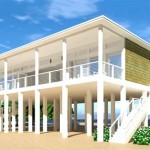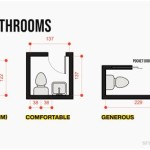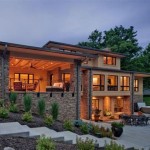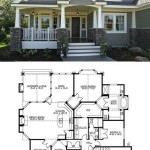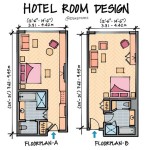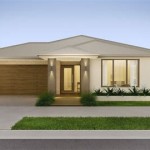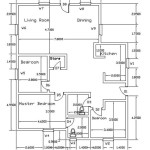How to Design House Plans
Designing house plans is a complex and rewarding process that requires careful consideration of various factors, including personal preferences, lifestyle needs, budget, and the surrounding environment. From conceptualizing the overall layout to incorporating specific architectural elements, designing a house plan is an iterative journey involving thoughtful planning and creative exploration. By following a systematic approach and understanding key principles, individuals can create a customized dwelling that reflects their vision and meets their specific requirements.
1. Define Your Needs and Preferences
Before embarking on the design process, it is crucial to clearly define your needs and preferences. Consider the following questions:
- What is the intended purpose of the house? Is it a primary residence, a vacation home, or a multi-generational dwelling? This will influence the number of bedrooms, bathrooms, and living spaces required.
- How many people will be living in the house? This will determine the overall size and layout of the dwelling, ensuring sufficient space for all occupants.
- What is your desired lifestyle? Do you entertain frequently? Do you work from home? Do you have hobbies or activities that require dedicated spaces? These factors will shape the layout and functionality of the house.
- What are your architectural preferences? Do you prefer a modern, traditional, or eclectic style? Research different architectural styles and consider which one resonates best with your taste.
- What is your budget? Establish a realistic budget range for the project to guide your design choices and ensure feasibility.
By thoroughly addressing these questions, you will have a solid foundation for developing a personalized plan that meets your specific needs and aspirations.
2. Consider the Site and Environment
The site and its surrounding environment play a crucial role in the design process. Analyze the following factors:
- Topography: Consider the slope, elevation, and any existing features, such as hills, valleys, or bodies of water. These elements can influence the orientation of the house, the placement of windows, and the overall aesthetic.
- Sun exposure: Determine the direction of sunlight throughout the day to optimize natural light and ventilation. Consider using passive solar design principles to maximize energy efficiency.
- Climate: The climate of your location will influence the design of the roof, the type of insulation used, and the placement of windows and doors.
- Views: Take advantage of any scenic views by strategically placing windows and balconies to maximize natural light and visual appeal.
- Privacy: Consider the proximity of neighboring properties and public areas. Design the house to provide a sense of privacy and seclusion.
By carefully considering these environmental factors, you can create a house that integrates harmoniously with its surroundings and maximizes its potential for comfort and sustainability.
3. Develop a Floor Plan
The floor plan is the blueprint of your house, defining the layout and arrangement of rooms. Start by creating a rough sketch that outlines the basic elements, such as the living room, kitchen, bedrooms, and bathrooms. Consider the following principles:
- Flow and circulation: Ensure a smooth and logical flow between rooms, allowing easy movement and minimizing awkward transitions.
- Functionality: Design rooms to serve their intended purpose efficiently, providing adequate space for activities and storage.
- Privacy: Plan for private areas, such as bedrooms and bathrooms, and ensure adequate separation from public spaces.
- Natural light and ventilation: Strategically place windows and doors to maximize natural light and air circulation.
- Accessibility: Consider accessibility features for individuals with disabilities, such as wheelchair-friendly doorways and ramps.
Use software tools or drafting techniques to refine the initial sketch, creating a detailed floor plan that accurately represents the dimensions, proportions, and relationships between rooms.
4. Incorporate Architectural Elements
Once the basic floor plan is established, focus on incorporating architectural elements that enhance the aesthetics and functionality of the house. Consider the following:
- Exterior style: Choose a roofline, windows, doors, and exterior finishes that complement your preferred architectural style.
- Interior finishes: Select flooring, wall coverings, and paint colors that create a cohesive and harmonious interior environment.
- Lighting: Plan for both natural and artificial lighting to create a welcoming and inviting ambiance.
- Fireplaces: Consider incorporating fireplaces to add warmth and ambiance to specific areas, such as the living room or family room.
- Outdoor spaces: Integrate outdoor living areas, such as patios, decks, or balconies, to extend the living space and enhance the connection to nature.
By paying attention to these architectural details, you can create a house that is not only structurally sound but also aesthetically pleasing and functional.
5. Consult with Professionals
Designing a house plan involves specialized expertise. Consult with architects, engineers, and other professionals to ensure the design meets building codes, safety regulations, and structural requirements. These professionals can also provide valuable insights and guidance on various aspects of the design process, from site analysis and structural engineering to energy efficiency and sustainable design principles.
Working with professionals can help you navigate the complexities of house plan design, ensuring that your vision is translated into a functional and aesthetically pleasing dwelling. Their expertise and experience can save you time, money, and potential headaches down the road. By collaborating with professionals and incorporating their knowledge into the design process, you can create a house that is both beautiful and reliable.

House Plans How To Design Your Home Plan

House Plans How To Design Your Home Plan

Floor Plans Learn How To Design And Plan

Free House Design Home And Plans

Small House Plans Popular Designs Layouts

House Plans How To Design Your Home Plan

Floor Plans How To Design The Perfect Layout Cherished Bliss

House Floor Plans Your Best Guide To Home Layout Ideas

Design Your Own Home House Designing Homes

Floor Plans Learn How To Design And Plan
Related Posts

